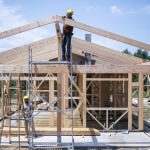By: Margaret Heidenry
You may be wondering if there are tax deductions when selling a home. And the answer is: You bet!
Sure, you may remember way back to 2018 and its new tax code—aka the Tax Cuts and Jobs Act—changed some rules for homeowners. But rest assured that if you sold your home in 2020 (or are planning to in the future), your tax deductions when you file with the IRS can still amount to sizable savings.
Want a full rundown of all the deductions (as well as tax exemptions or other write-offs) at a home seller’s disposal? Check out this list to make sure you don’t miss any of them.
1. Selling costs
These deductions are allowed as long as they are directly tied to the sale of the home, and you lived in the home for at least two of the five years preceding the sale. Another caveat: The home must be a principal residence and not an investment property.
“You can deduct any costs associated with selling the home—including legal fees, escrow fees, advertising costs, and real estate agent commissions,” says Joshua Zimmelman, president of Westwood Tax and Consulting in Rockville Center, NY.
Just remember that you can’t deduct these costs in the same way as, say, mortgage interest. Instead, you subtract them from the sales price of your home, which in turn positively affects your capital gains tax (more on that below).
2. Home improvements and repairs
Score again! If you renovated a few rooms to make your home more marketable (and so you could fetch a higher sales price), you can deduct those upgrade costs as well. This includes painting the house or repairing the roof or water heater.
But there’s a catch, and it all boils down to timing.
“If you needed to make home improvements in order to sell your home, you can deduct those expenses as selling costs as long as they were made within 90 days of the closing,” says Zimmelman.
3. Property taxes
This deduction is capped at $10,000, Zimmelman says. So if you were dutifully paying your property taxes up to the point when you sold your home, you can deduct the amount you paid in property taxes last year up to $10,000.
4. Mortgage interest
As with property taxes, you can deduct the interest on your mortgage for the portion of the year you owned your home.
Just remember that under the 2018 tax code, new homeowners (and home sellers) can deduct the interest on up to only $750,000 of mortgage debt, though homeowners who got their mortgage before Dec. 15, 2017, can continue deducting up to the original amount up to $1 million, according to Zimmelman.
Note that the mortgage interest and property taxes are itemized deductions. This means that for it to work in your favor, all of your itemized deductions need to be greater than the new standard deduction, which the Tax Cuts and Jobs Act nearly doubled when it went into effect.
To make matters a tad more complicated, those figures changed once again in 2020, increasing to $12,400 for individuals, $18,650 for heads of household, and $24,800 for married couples filing jointly.
5. Capital gains tax for sellers
The capital gains rule isn’t technically a deduction (it’s an exclusion), but you’re still going to like it.
As a reminder, capital gains are your profits from selling your home—whatever cash is left after paying off your expenses, plus any outstanding mortgage debt. And yes, these profits are taxed as income. But here’s the good news: You can exclude up to $250,000 of the capital gains from the sale if you’re single, and $500,000 if married. The only big catch is you must have lived in your home at least two of the past five years.
And remember that capitol gains are calculated on the cost basis of your home, not the original purchase price. What’s cost basis? Say you purchase a home for $400,000, then spend $100,000 on improvements, you would have a cost basis of $500,000. A married couple could then sell for the home for $500,000 (after living there two years) without having to pay any capital gains taxes.
In other words, the higher your cost basis, the smaller your tax bill once you sell. Just remember to keep track of every single home improvement receipt.
Finally, look for the rules of this exemption to possibly change in a future tax bill.
Ralph DiBugnara, vice president at Cardinal Financial, says lawmakers might push to change this so that homeowners would have to live in the property for five of the past eight years, instead of two out of five.






